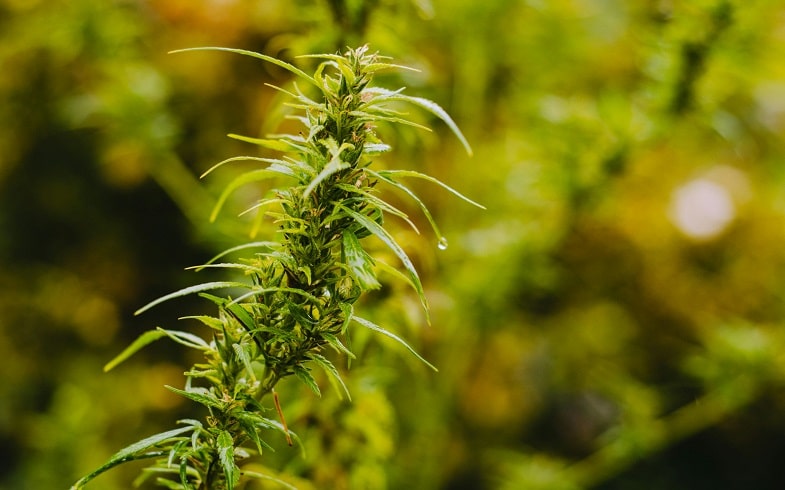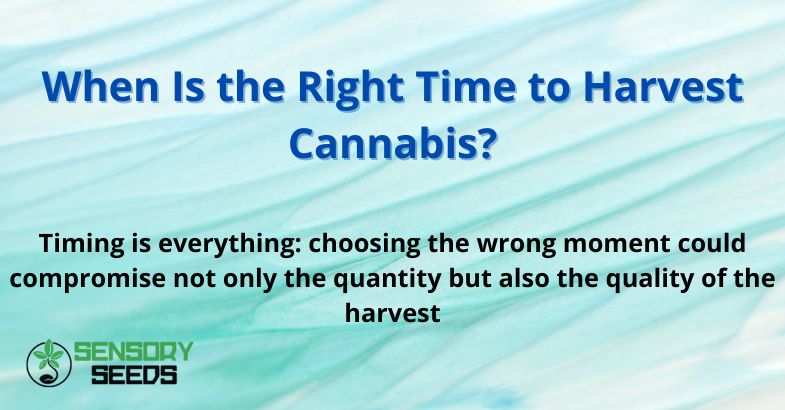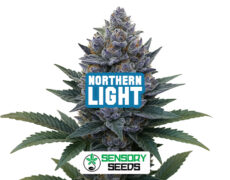Published on: 11/10/2024
Timing is everything: choosing the wrong moment could compromise not only the quantity but also the quality of the harvest
An early harvest might not deliver the desired full potency, while a late one risks deteriorating cannabinoids and terpenes, reducing the effectiveness and flavor of the final product. In this article, we will explore in detail how to identify the perfect time to harvest your cannabis, analyzing visual signs, chemical changes, and techniques that can help you maximize the quality of your harvest.
How Does the Life Cycle of a Cannabis Plant Work?
To understand when to harvest cannabis, it is necessary to comprehend the life cycle of the plant. Cannabis seeds go through various growth stages, each requiring particular attention. From germination to vegetative growth, and finally to the flowering stage, each phase has specific characteristics. However, it is during the flowering stage that the buds develop, making this phase the most crucial.
Germination and Vegetative Growth
In the first weeks of life, the cannabis plant focuses its energy on developing a strong root system and growing robust leaves. During this phase, it is crucial to provide the plant with an adequate amount of light and nutrients to support vigorous growth. However, it’s not yet time to worry about the harvest; the plant is still far from reaching its full potential.
Flowering
The flowering stage is when the cannabis plant starts producing the buds that contain cannabinoids, such as THC and CBD, as well as terpenes that give the distinctive aroma and flavor. Flowering can last from six to twelve weeks, depending on the strain and growing conditions. During this phase, the plant undergoes significant changes, and the grower must pay attention to signs indicating optimal maturity.
Read also: The Differences Between Cannabis Sativa, Indica, and Ruderalis: What Makes Each Variety Unique


What Signs to Look For to Determine if Your Plant is Ready
One of the most reliable ways to determine the ideal harvest time is to closely observe the visual changes occurring in the plant’s buds and trichomes. Trichomes are tiny glandular structures found on the flowers and leaves of the plant, and they are responsible for producing cannabinoids and terpenes.
Observe the Pistils
Pistils are small filaments that emerge from the calyxes of the flowers. When the plant is young, these pistils are white and upright. As flowering progresses, the pistils start to change color, shifting from white to yellow, then orange, brown, and finally red or dark brown. When approximately 70-90% of the pistils have changed color and curled, the plant is nearing harvest time. However, pistils alone are not a sufficient indicator, and other factors should also be observed.
Examine the Trichomes
Trichomes can be best observed using a magnifying glass or a digital microscope. At the beginning of the flowering stage, trichomes are transparent and resemble tiny glass bubbles. Over time, they begin to turn milky, taking on an opaque appearance. When most of the trichomes are milky, with some starting to turn amber, it is generally considered the optimal time for harvesting. Milky trichomes indicate a high THC content, while amber trichomes suggest a higher content of CBN (cannabinol), a cannabinoid that has more relaxing effects.
Observe the Color of the Leaves
Another visual sign to consider is the change in leaf color. During the final stage of flowering, the larger leaves closer to the buds may start to turn yellow. This is a sign that the plant is redirecting its resources toward the flowers, indicating that harvest is approaching.
The Importance of Timing: Never Too Early, Never Too Late
The timing of the harvest can significantly affect the chemical profile of the final product, and thus the effect it will have on users. Harvesting too early or too late can alter the content of cannabinoids and terpenes, changing the overall experience.
Early Harvest
An early harvest, when trichomes are still predominantly transparent, can result in a product with lower THC content and a lighter, more stimulating effect. Terpenes may not be fully developed, leading to a less intense aroma and flavor. However, some growers might prefer this option if they are seeking more energizing effects and a lower risk of side effects, such as anxiety.
Late Harvest
On the other hand, waiting too long to harvest can lead to increased degradation of THC into CBN, a cannabinoid with more sedative effects. This type of cannabis might be preferred by those seeking a relaxing effect or for medicinal purposes, such as treating insomnia. However, a late harvest can also result in a more earthy and less fresh flavor, as well as a higher risk of mold if environmental conditions are not optimal.


How Environmental Factors Affect Harvesting
In addition to visual and chemical signs, it’s important to consider environmental factors that can influence the timing of the harvest. Climate conditions, humidity, light, and even the type of cultivation (indoor or outdoor) can have a significant impact.
Outdoor Cultivation
For those growing cannabis outdoors, the timing of the harvest can be partially determined by weather conditions. Outdoor plants are exposed to the elements, and a sudden cold snap or rain could negatively affect the crop. In such cases, it might be necessary to harvest early to avoid damage, even if the trichomes are not yet at their optimal stage. Mold prevention is particularly important in outdoor cultivation, where humidity can quickly rise and cause bud rot.
Indoor Cultivation
Indoor cultivation offers greater control over environmental conditions, allowing growers to optimize temperature, humidity, and light for the best results. However, even in controlled environments, it is crucial to closely monitor the plant to determine the best time for harvest. Excessive temperature or incorrect humidity can accelerate or delay maturation, altering the plant’s chemical profile.
Read also: The Origin of Cannabis
In Conclusion
Harvesting cannabis at the right time requires careful observation! Following the clues and applying the appropriate techniques will allow you to achieve a final product that meets your expectations in terms of quality, potency, and flavor. Attention to detail during the harvest phase can make the difference between a good crop and an extraordinary one. But to assure a quality harvest you have to start with quality seeds, in our SensorySeeds store you can find the right product for you.









